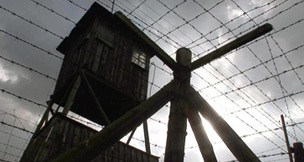

Meyer focuses on the few remaining survivors of the Madjanek camp, where the Nazis had killed most of their prisoners in gas chambers. What the camp guards weren’t as good at was spying on the inmates. Thus, while waiting to be killed, some of the victims were able to bury valuable trinkets and other property about six inches below the earth—both to keep their captors from seizing their personal items but also to leave a legacy for anyone in the future who might be able to find them.
Another storyline concerns that very attempt to excavate those buried items. Through research and the help of modern technology, an international team of archeologists try to locate the pertinent area of the camp. In order to assist the effort, the elderly escapees return to the location for the first time since they were imprisoned. It is not clear until the final part of the film whether they will find anything.
Callous as it sounds to say, Buried Prayers is interchangeable with The Last Days, Fighter, Paragraph 175 and the overwhelming number of other documentaries, not to mention the many fiction films, on the same subject and Steven Spielberg’s Jewish Film Archive project. That doesn’t mean Buried Prayers or some of these other productions aren’t worth watching. It is simply that most people should understand the horrors of the Holocaust without exposing themselves to what has become a shtetl industry of Holocaust porn. Since part of my own family died in the Holocaust, I find some of these films vital and important to see but too many others oversimplified and overly sentimental. Buried Prayers stands somewhere in between the two extremes.
Where the film succeeds is in recording the stories of the ex-prisoners, quietly and with dignity. Though these tales are gut-wrenching, Meyer does not spoil or exploit them with any overemphatic technique (in general, the film is well-photographed and edited). Elsewhere, particularly in the latter scenes of the archeological dig and return of the escapees, sappy music and “reality TV”-style close-up photography turn the heartbreaking and cathartic into something more melodramatically Spielbergian than necessary. At least this section does not invalidate what came before.
It takes excavation on the viewer’s part, but Buried Prayers contains people and stories worthy of discovery and discussion.
Source: filmjournal.com
